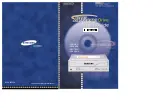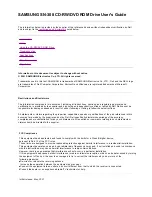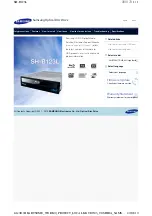
Sufficient time must be allowed for the shipped equipment to gradually reach thermal equilibrium with the indoor environment before you remove the shipping bag and
energize the equipment. Follow these guidelines to properly acclimate your equipment:
Leave the system in the shipping bag. If the installation or staging environment allows it, leave the product in the full package to minimize condensation on or within
the equipment.
Allow the packaged product to acclimate for 24 hours
1
. If visible signs of condensation (either external or internal to the product) are seen after 24 hours, acclimate
the system without the shipping bag for an extra 12 - 24 hours or until no visible condensation remains.
Acclimate the product away from perforated tiles or other direct sources of forced air convection to minimize excessive condensation on or within the equipment.
1
Unless otherwise stated by product-specific installation instructions.
Note: Condensation is a normal occurrence, especially when you ship equipment in cold-weather climates. All IBM products are tested and verified to withstand
condensation that is produced under these circumstances. When sufficient time is provided to allow the hardware to gradually acclimate to the indoor environment, no
issues with long-term reliability of the product should occur.
Performing the safety inspection procedure
Before you service the unit, complete the following safety inspection procedure.
1. Stop all activities between the host and the library’s tape drives.
2. Turn off the power to the library by pushing in the Power button on the front of the tape library for 4 seconds.
3. Unplug the library’s power cord from the electrical outlet and the library’s power supply unit.
4. Check the library’s power cords for damage, such as a pinched, cut, or frayed cord.
5. If drives are FC/SAS attached, check the tape drive's FC/SAS cable for damage.
6. Check the top and bottom covers of the library for sharp edges, damage, or alterations that expose its internal parts.
7. Check the top and bottom covers of the library for proper fit. They must be in place and secure.
8. Check the product label at the rear of the library to make sure that it matches the voltage at your outlet.
Rack safety
The following general safety information must be used for all rack-mounted devices.
DANGER
Observe the following precautions when working on or around your IT rack system.
Heavy equipment - personal injury or equipment damage might result if mishandled.
Always lower the leveling pads on the rack cabinet.
Always install stabilizer brackets on the rack cabinet.
To avoid hazardous conditions due to uneven mechanical loading, always install the heaviest devices in the bottom of the rack cabinet. Always install servers and
optional devices starting from the bottom of the rack cabinet.
Rack-mounted devices are not to be used as shelves or work spaces. Do not place objects on top of rack-mounted devices. In addition, do not lean on rack mounted
devices and do not use them to stabilize your body position (for example, when working from a ladder).
Each rack cabinet might have more than one power cord.
For AC powered racks, be sure to disconnect all power cords in the rack cabinet when directed to disconnect power during servicing.
For racks with a DC power distribution panel (PDP), turn off the circuit breaker that controls the power to the system unit(s), or disconnect the customer’s DC
power source, when directed to disconnect power during servicing.
Connect all devices installed in a rack cabinet to power devices installed in the same rack cabinet. Do not plug a power cord from a device installed in one rack
cabinet into a power device installed in a different rack cabinet.
An electrical outlet that is not correctly wired could place hazardous voltage on the metal parts of the system or the devices that attach to the system. It is the
responsibility of the customer to ensure that the outlet is correctly wired and grounded to prevent an electrical shock. (R001 part 1 of 2)
Caution
Do not install a unit in a rack where the internal rack ambient temperatures might exceed the manufacturer's recommended ambient temperature for all your rack-
mounted devices.
Do not install a unit in a rack where the air flow is compromised. Ensure that air flow is not blocked or reduced on any side, front, or back of a unit that is used for air
flow through the unit.
IBM TS22xx - TS2290, TS2280, and TS2270
71
















































